Off Topic: The Outer Worlds is a welcome anomaly in today’s engagement focused game industry
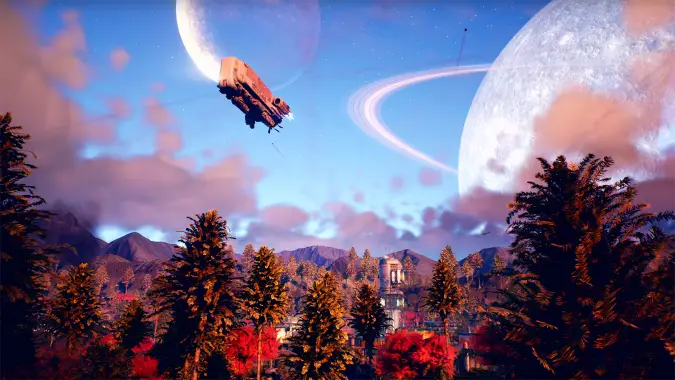
I haven’t finished The Outer Worlds, and that’s because I have a lot of stuff to do before I fly out to California this week and so this is less a full review and more a preview — for full disclosure I’m up to level 19 or so and stuck in pretty deep into the world Monarch, or Terra 1, after starting out on Terra 2 and the Groundbreaker. So, while I can’t tell you much about how the game ends, I can talk about how it plays so far. And so far, The Outer Worlds is that rarest of unicorns in today’s gaming scene — a single player focused RPG without any microtransactions at all.
There’s no skins, no cosmetic loot, no actual loot, you can’t buy maps or in game resources or anything of the sort. You can buy the game, and then you can play the game, and that’s it. It is not selling you anything but itself, and in a world where companies like Ubisoft and EA seem determined to force games to provide ‘Engagement’ in an easily monetized way, The Outer Worlds is Obsidian just providing you with an actually engaging game.
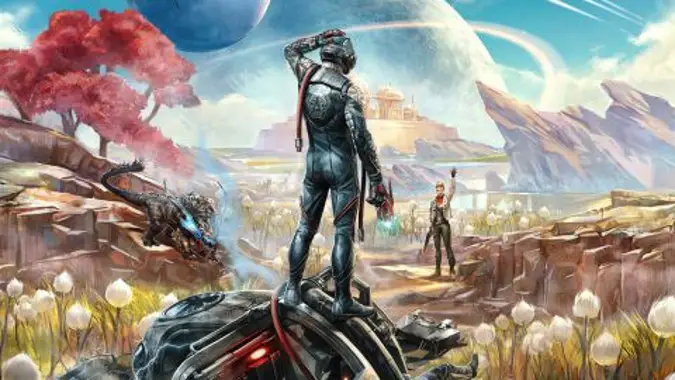
Gaming in 2019 isn’t supposed to make something like this
It’s strange to say that this is a gamble, but in 2019? It absolutely is. And it’s one that, in my opinion, has paid off beautifully. This is a visually stunning game, one that lets you decide how you want to play it.
Do you want to be a diplomat who solves everyone’s problems with negotiation? Or would you rather just shoot everyone who annoys you? Or perhaps you’re looking for a middle ground between these extremes? The Outer World lets you decide what you want to do, and then the game unfolds as the consequences of your actions becomes apparent. At least once so far, I’ve just said this is suspicious and shot up a house full of people and it’s turned out that they were murderous cannibals, and the next time? They were just people and I’d murdered them for nothing.
There’s nothing particularly novel about The Outer Worlds except that it eschews so much of what we’ve come to expect in a game market where some companies are charging $100 a month to play big open world multiplayer games on private servers. Obsidian is simply presenting you with a single player RPG, no multiplayer, no subscription fee.
The Outer Worlds is a good, engaging, quirky in the same way that Fallout New Vegas and Alpha Protocol were — and yes, I will defend Alpha Protocol as a good game. Obsidian have a stories pedigree and The Outer Worlds is the product of a whole lot of people, as all modern video games are. But it would be a mistake to ignore Tim Cain and Leonard Boyarsky here, because they are clearly all over this game. It feels like their game, and if you’ve ever played Fallout or Fallout 2 or Arcanum or any of the games they’ve worked on before, this game is going to remind you of their previous works.
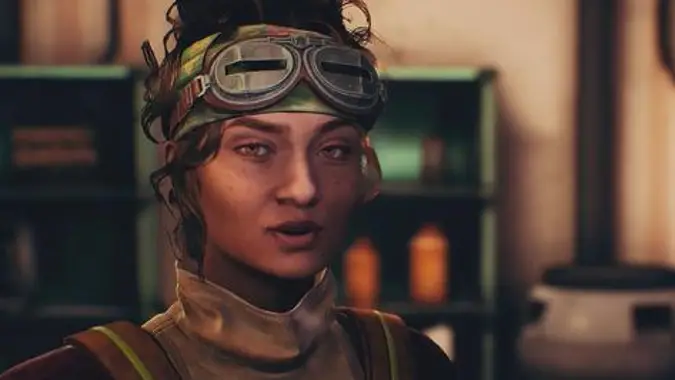
It’s fantastic both in terms of subject matter and quality
I haven’t said The Outer Worlds is good yet, and that’s because the word good seems insufficient, and also it obfuscates my experience with the game. From the moment you start it, the game throws its unique, bizarrely dystopian corporate setting at you — I described it to my wife as art deco meets space western meets cyberpunk, and you can feel those influences rumbling under the surface like the Tarot in a Tim Powers novel, occasionally breaching the surface with shocking force. You play one of the cryogenically frozen colonists whose ship has been left abandoned on the edge of the Halcyon system, a corporately controlled colonial region on the fringes of human space. Freed by a friendly scientist who may be just a bit mad, you must navigate the new worlds you find yourself in, assemble a functional crew to help you pilot the spacehip you, ahem, ‘acquire’ with all the finger quotes, and figure out a way to rescue your fellow cryosleeping colonists in order to save the colony from the people who will destroy it. If you can ever figure out who that is, anyway.
Gameplay is pretty standard. The Outer Worlds doesn’t do anything that will shock or surprise you, because it’s not trying to. You shoot or bludgeon things with a wide variety of weapon and armor choices, your character can choose between various stats depending on what you want to be good at, there are skills and perks and flaws you can choose to help you along those pathways. If you’ve played any of the games the people behind this game have ever made before, you will not be surprised by any of this. There’s a time dilation ability that allows you to plan out your first shot in any combat, which is fun and useful but won’t really win a fight for you so much as let you open up from a strong position or salvage things if they’re starting to go south with a few well placed shots.
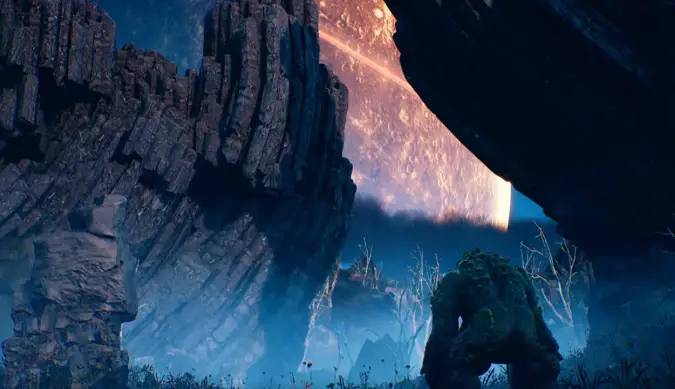
The best writing you’ll see in a RPG this year
The heart of the game, and where it really shines, is in the writing — your companions are unique and engaging and so far I like them all for different reasons even if Vicar Max irritates the heck out of me sometimes. They aren’t just there to agree with you, but neither do they feel like they exist just to be mouthpieces for specific philosophies. Parvati, for example, is socially awkward, a talented engineer, has a complicated romance with another NPC (not you — in fact, there are no romance options for the player in this game) and is an asexual character, one of the first and the most explicitly and nuanced ones I’ve seen to date. Your companions are a source of quests — they each have their own wants and needs — and of course they’re backup in the hostile worlds you’re adventuring in, but they’re also people, warts and all.
Even your opposition is often portrayed not as monsters you have to destroy but just people — people trying to survive and make lives in a corporate system that doesn’t care about anything but the bottom lines. It’s a little weird to be getting a strong message of the evils of capitalism unchecked in a video game made by a company owned by Microsoft of all places, but it’s definitely here. The Outer Worlds presents the foibles of unchecked greed and miltant utopianism, without feeling like it’s arguing any sort of both sides are equally bad sophism.
This is a game that wants to explore all the ways people can screw things up, ultimately, and the difficulties of navigating in a corrupt system while being aware that most people caught in it are just trying to live their lives. However, it never once forgets that the setting it’s using is a wild, pulp era outer space adventure with shades of the old C.L. Moore Northwest Smith stories like Shambleau or even Firefly thrown in for good measure.
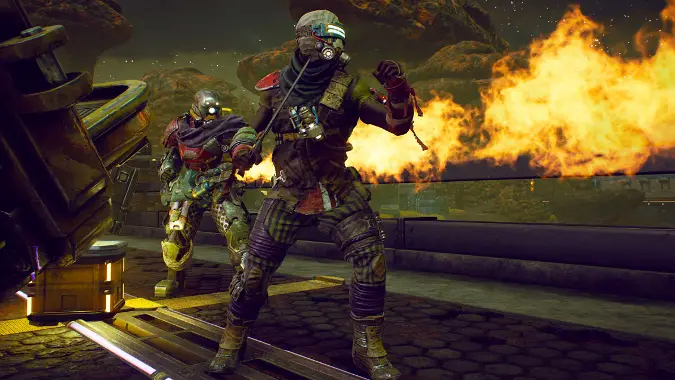
Get this game. Get it now.
People are going to compare this game to Fallout New Vegas and for good reason — in many ways, it trades the Post Apocalyptic setting for pulp era space opera sci fi, but it’s really not like that game in many ways. In fact, I recommend you go back and play Arcanum: Of Steamworks and Magick Obscura that Cain and Boyarsky previously worked on, if you want to see the real ancestor of The Outer Worlds. This is a game that really couldn’t have been made back in 2001, but which absolutely defies the odds to get itself made here in 2019, a game that simply exists and isn’t trying to sell you added features. It’s a very, very good RPG with an engrossing story that understands that most conflict comes from human hearts, both in conflict with themselves and with others.
It’s a strange, beautiful game, with excellent art and a striking visual style and writing that focuses on the weird, ephemeral and tragic nature of humanity as a mess made of and by people just trying to live. It’s worth your time. It’s probably the ultimate form of this kind of storytelling, and if you’ve ever enjoyed anything by the studio or the people behind it, definitely get it.
Please consider supporting our Patreon!
Join the Discussion
Blizzard Watch is a safe space for all readers. By leaving comments on this site you agree to follow our commenting and community guidelines.
 @MatthewWRossi
@MatthewWRossi



